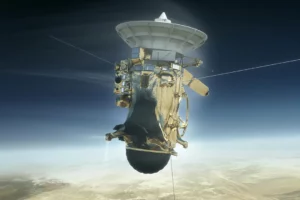Two-time Grand Slam champion Simona Halep has been banned for four years for breaches of the Tennis Anti-Doping Programme.
An independent tribunal determined the 31-year-old Romanian had committed “intentional” anti-doping violations.
Halep has always denied knowingly taking the banned substance Roxadustat.
She faced two charges: one for testing positive for Roxadustat and another for irregularities in her athlete biological passport.
The written reasons behind Halep’s ban were released on Thursday. BBC Sport takes a look at the report’s main findings.
What has Halep done?
Former world number one Halep tested positive for Roxadustat at the US Open in August 2022, leading to one of the most high-profile doping cases tennis has seen.
Roxadustat is used medically to treat anaemia – an iron deficiency which can cause fatigue.
The drug increases both the number of red blood cells and the amount of haemoglobin – a protein that carries oxygen in your body – found in those cells.
And having more oxygen in your body helps improve endurance and recovery.
She was given a provisional suspension when the failed test was announced in October 2022.
Halep said she had ingested Roxadustat unknowingly, arguing it was caused by contamination of a collagen supplement.
In May this year, a second charge was added after irregularities were found in her athlete biological passport (ABP).
The ABP programme collects and compares biological data to spot discrepancies in an athlete’s blood over time that suggest possible doping.
Halep’s defence suggested the irregularities spotted were caused by factors including blood loss during an operation and periods when she was not training.
What did the report find?
The report produced by an independent panel spanned 126 pages in which the complexity of the case was laid bare.
The conclusions centred around the two key areas: the alleged contamination of Roxdustat and the discrepancies in Halep’s athlete blood passport.
The report concluded the collagen supplement taken by Halep – called Keto MCT – was contaminated with Roxadustat “on the balance of probability”.
However, it also concluded there was another source of Roxadustat in the sample provided by Halep at the US Open on 29 August last year.
“If Halep did use contaminated Keto MCT as she describes, it could not have been the sole source of the Roxadustat detected,” the report said.
Halep has “not been able to identify the source of the other Roxadustat”.
The report said: “We recognise our conclusions involve a finding of something which in itself appears highly improbable; that around the same time in 2022, Ms Halep ingested Roxadustat from two entirely separate sources [the supplement and somewhere else].
“We should not and do not speculate on how the apparently highly unlikely coincidence of the two separate sources of Roxadustat came about. The evidence just does not tell us.
“All we can add here is that if we were to discard one or other of the conclusions [One being the MCT was contaminated, two being she took it from another source], it would be conclusion one. The evidence in support of conclusion [two] is too compellingly strong for that to be the one to give.”
The report said three experts had “a high degree of confidence” there was not an “innocent explanation” for the irregularities in Halep’s athlete’s biological passport (ABP) profile.
The three experts – Dr Jakob Morkeberg, Dr Laura Garvican-Lewis and Professor Giuseppe d’Onofrio – assessed the results and each believed there was “likely doping”.
Halep’s defence – including blood loss during surgery and spells when she was inactive – was found not to be plausible.
The expert panel had a “strong opinion” the explanations provided by Halep could “not individually or collectively account for the abnormalities”.
They concluded the possibility of blood manipulation was “high”, adding it was “likely” to be a prohibited method.
Why did she get four years?
The International Tennis Integrity Agency (ITIA), which is responsible for testing within the sport, asked for a six-year ban because of what they argued were “aggravating circumstances”, believing Halep’s doping was “repetitive and sophisticated”.
It also believed she must have been using a prohibited substance or prohibited method from March 2022 at the latest.
The ITIA suggested Halep was blood doping in order to boost her performance at Wimbledon and the US Open last year.
The ITIA also asked for her results to be disqualified from 8 March 2022 through to her provisional suspension on 7 October 2022.
The report found it was not “comfortably satisfied” that Halep had been doping from March, even though there were “strong grounds for suspicion”.
No samples of Halep’s ABP were collected between March and August last year.
All of Halep’s results from the US Open in 2022 – where she played her last match – have been disqualified, with the tribunal “comfortably satisfied” she had committed a doping violation at the tournament.
Halep has stated her intention to appeal against the tribunal’s decision at the Court of Arbitration for Sport.
If she is to avoid a four-year ban from tennis, she has to prove “on the balance of probability” that her use of Roxadustat from another source was not intentional.
Why did Halep start using the supplement?
Halep, who has always denied knowingly taking Roxadustat, said the positive result came as the “biggest shock of her life” when her provisional suspension was announced in October 2022.
She said she had never heard of Roxadustat until then.
In her statement presented to the independent tribunal, Halep said the Keto MCT supplement had been recommended by her physiotherapist Candice Gohier to help with nasal problems.
She described how she checked with Gohier and coach Patrick Mouratoglou that Keto MCT was safe to use, with both of them agreeing it was after checking the supplement’s listed ingredients.
Gohier got the supplement on the advice of Frederic Lefebvre, the director of physical preparation at Mouratgolou’s academy.
Halep said she started using Keto MCT in the middle of August 2022, and used it for five days between 23 and 28 August – one day before the US Open, where she suffered an unexpected first-round exit.
However, Halep did not disclose the Keto MCT supplement on her Doping Control Form for the urine sample that tested positive on 29 August and she also did not mention it in an interview with the ITIA on 26 October.
At June’s hearing, Halep said she had forgotten about it on both occasions.
















